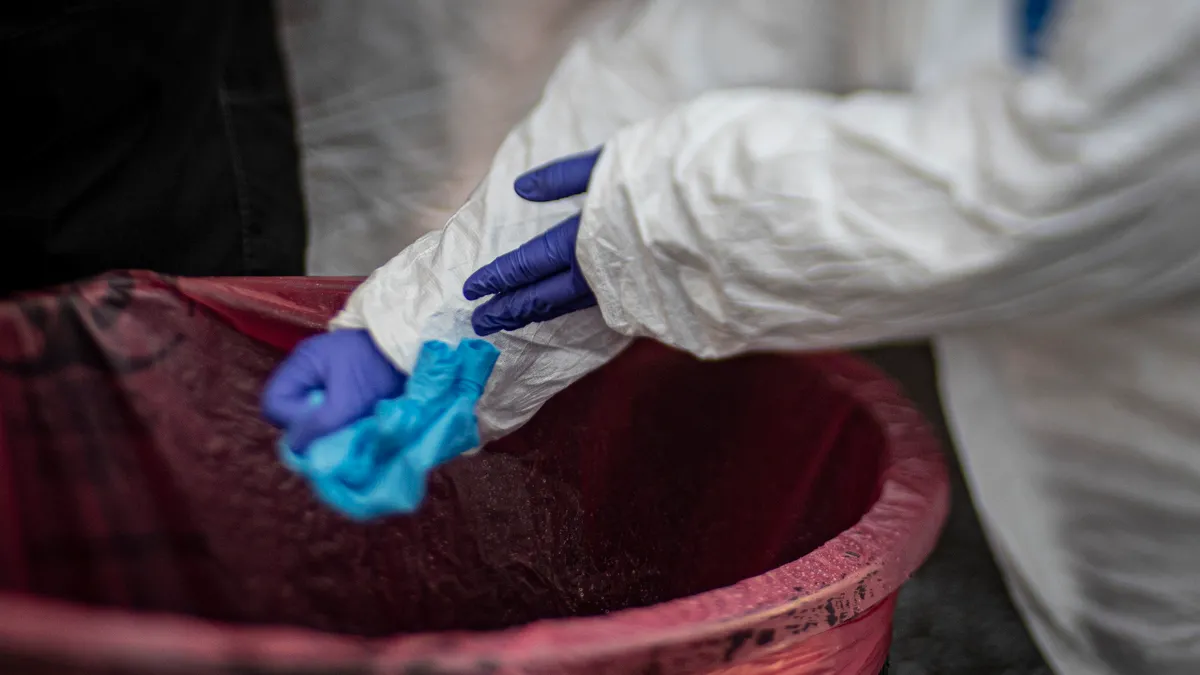Dive Brief:
- Four out of six infections routinely tracked at U.S. hospitals rose significantly during the COVID-19 pandemic, according to a Centers for Disease Control and Prevention data analysis published in the journal of the Society for Healthcare Epidemiology of America on Thursday.
- From 2019 to 2020, major increases were observed in central-line associated bloodstream infections, catheter-associated urinary tract infections, ventilator-associated events and antibiotic resistant staph infections, according to the report.
- Higher volumes of sicker patients requiring more frequent and longer use of medical equipment like catheters and ventilators attributed to the rises, along with staffing and supply challenges, the CDC said.
Dive Insight:
Infections are a persistent, deadly and costly problem for health systems and patients. Still, rates of infection contracted at hospitals and other healthcare facilities were in decline before the pandemic reversed that, the report noted.
"Infection control practices in COVID-19 wards often adapted to shortages of personal protective equipment (PPE), responded to the fears of healthcare personnel, and did not always lend themselves to better infection prevention," Tara Palmore and David Henderson of the National Institutes of Health wrote in an editorial accompanying the study.
Researchers looked at data collected through the National Healthcare Safety Network, which is used by nearly all U.S. hospitals to fulfill local, state or federal infection reporting requirements, and compared infections tracked during every quarter of 2020 versus 2019. They did not analyze data from 2021, however.
The largest rise was seen in bloodstream infections associated with central line catheters inserted into large blood vessels to provide medications and other fluids over long durations. Central line infections were 46% to 47% higher in the third and fourth quarters of 2020 compared to those in 2019, the analysis found.
Ventilator-associated infections also rose sharply with increased use, with the rate of those infections up by 45% in the fourth quarter of 2020 compared to the same quarter in 2019.
Despite the rise in certain infections, two other types of infections routinely tracked at hospitals actually stayed stable during the pandemic.
The rate of surgical-site infections did not increase as fewer procedures were performed, the report found. At the same time, no increase was seen in Clostridioides Difficile, or C. diff, a serious bacterial infection that occurs after antibiotic use.
That's likely due to a heightened focus on hygiene, cleaning and use of PPE, according to the study. Staffing shortages throughout the pandemic, however, likely contributed to the rising rate of other infections.
"I think we've realized that prevention of these healthcare-associated infections that are largely device-related are probably relying more heavily on continued attention from infection prevention staff than either we realized or than should probably happen," Sharon Wright, chief infection prevention officer for Beth Israel Lahey Health in Massachusetts, who was not involved in the report, said.











